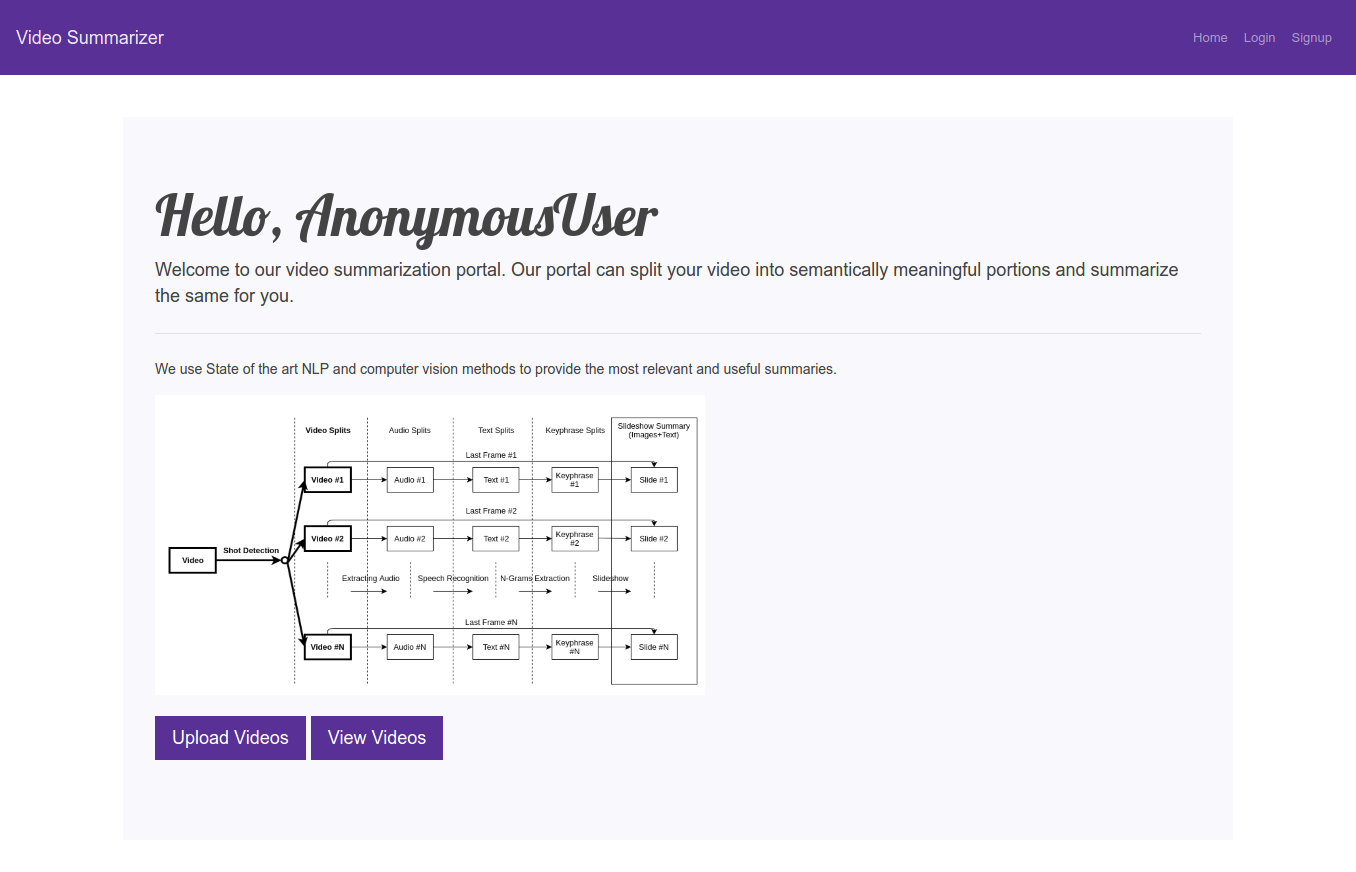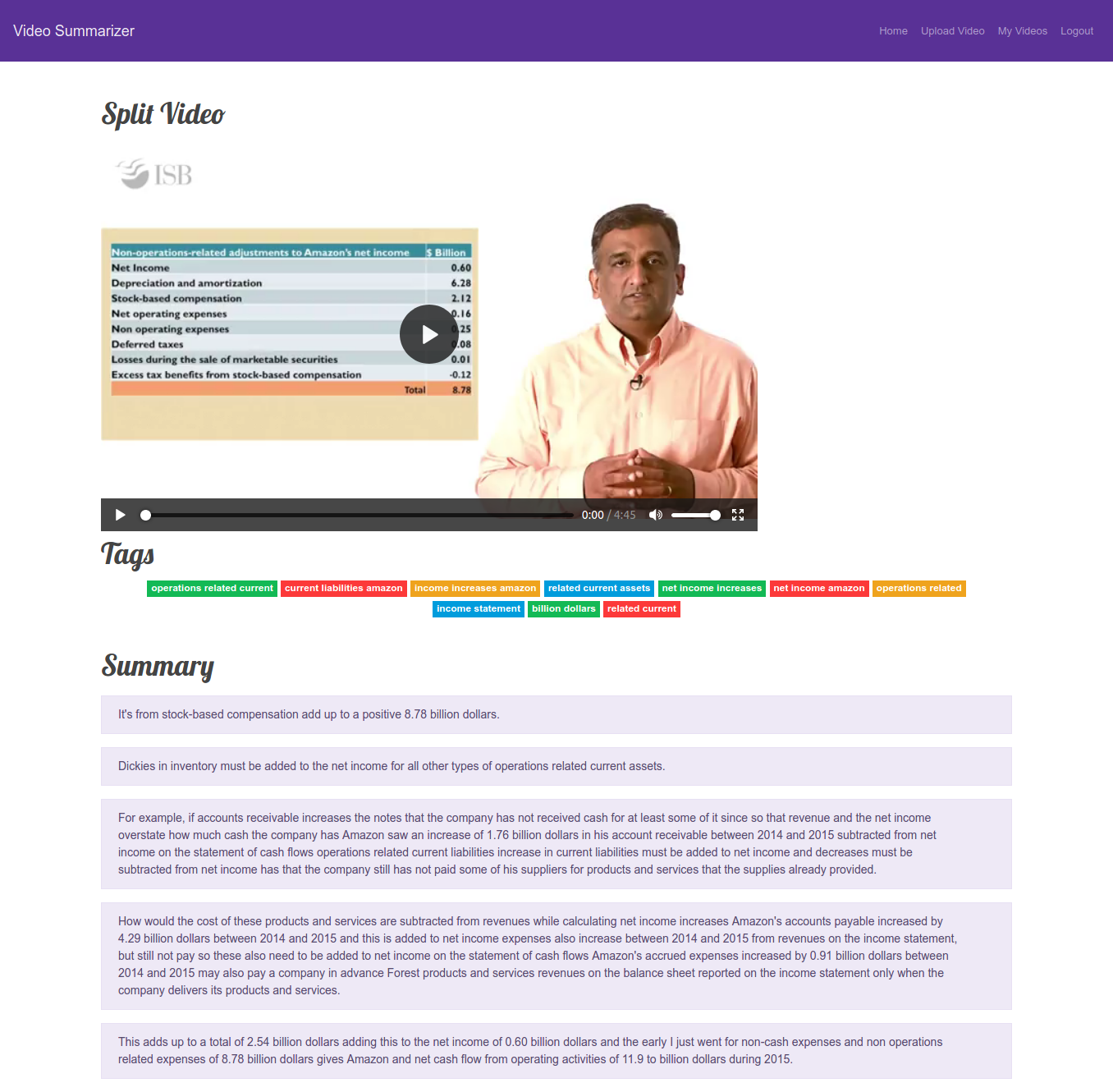As part of our end semester project in Software Engineering, we aim to make a web application to automatically summarize lecture videos using AI. Our solution would leverage the latest advancements in machine learning and computer vision to make it very easy for users to revise using the uploaded videos.
In essence, we have done the following:
- Given a video (uploaded by the users), we split it into several meaningful short sections/clips based on visual cues
- For each clip, we generate the captions of the lecture video using deep learning models for speech recognition
- We generate keywords and a summary for each of the above clips using extractive and descriptive summarization tools
- The short clips are then indexed using the corresponding keywords and can be searched by the user using a web UI
The code is completely modularized.
- shot_detection: It contains the code for automatic detection of transitions between shots in a given video. In our case, we have used the PySceneDetect library for the same but have created an interface ShotDetectionInterface so that if needed, the work can be extended to use other open source libraries as well. The module also splits the original video according to the splits.
- audio_generation: It contains the code for extraction of audio out of each individual video clips using FFMPEG.
- speech_recognition: Speech recognition refers to the task of converting the audio into corresponding text. We have used Google Speech Recognition API for the same due to availability of free credits but have created an interface SpeechRecognitionInterface so that if needed, the work can be extended to APIs provided by Microsoft, Amazon, etc.
- summarization: The module performs the automatic text summarization. We have used Yake for the same but have created an interface SummarizationInterface so that if needed, the work can be extended to other summarization models like WordFrequencySummarizer
Each of the above modules have their test files in their respective folders.
- Test for shot detection
- Test for audio generation
- Test for speech recognition
- Test for summarization
Some screenshots from the web application.


Run from root.
pip install -r videoSummarizer/requirements.txt
Follow these steps from the root.
-
Create a database named 'VideoSummarizer':
mysql -u root -p create database VideoSummarizer -
In videoSummarizer folder, change the mysql.cnf file according to your mysql details.
-
In settings.py file, add path of the above mysql.cnf file in
read_default_filefield. -
Add tables to your database using :
python videoSummarizer/manage.py migrate -
Run the server using:
python videoSummarizer/manage.py runserver -
You can create a superuser using:
python videoSummarizer/manage.py createsuperuser
- We have implemented Model View Template(MVT) design pattern. The Model is the logical data structure behind the entire application and is represented by a database. The View is the user interface and template consists of static parts of the HTML output as well as describes how dynamic content will be inserted.
- Our application follows object oriented paradigm, which is a sub category of imperative programming paradigm. Interfaces and objects are created for each of the sub modules.
- We have abstracted according to the problem defined in the design document.
- Function names are self explainatory and docstrings are provided wherever necessary. Functions are small(7-10 lines) and have one level of abstraction.
- The code of different sub modules is easily extendile to other APIs and libraries.
- Exceptions are handled by using try except blocks.
- We have followed SOLID design principles.
- A user can upload videos only when he/she is logged in.
- Uploaded videos should not be larger than 100 MB in size.
- Code is written in python3.